Don't wanna be here? Send us removal request.
Text
WEEK 12
Artistic Vision Statement
We were tasked to create our own Artistic Vision Statement on week 10. We were asked four questions and was tasked to answer them. Our answers was then passed to another classmate at random and they would provide critique on our answers.
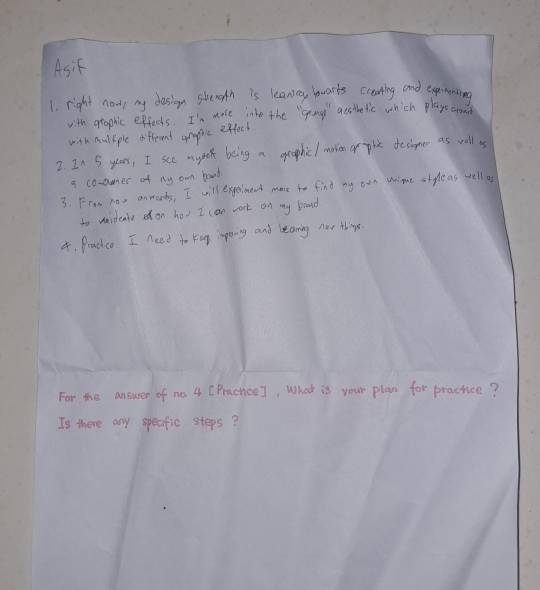
I don't have a pretty clear idea with what I want to do in the next five years. Currently, I am just going with the flow. I hope that in five years time, I will be able to co-own my own brand. Expanding on the idea of building this brand, there are a lot of things i have to do in order to be able to create it. I will have to properly research and understand what it means to own a brand. I know how tough and challenging it is and I must prepare myself for the worst.
The artwork "Dalam" by Mohdir is a piece i find rather exquisite. The piece itself has a beautiful meaning behind it. The concept behind "Dalam" centers on the interior experience and how people engage with spaces on an intimate level. This project delves into the subtlety of how interior environments shape our emotions, behaviors, and sense of identity. Rather than focusing purely on form, "Dalam" invites viewers to reflect on the atmosphere, materiality, and sensory experiences that define spaces.

For me, "Dalam" by Mohdir is a powerful reminder of what design can truly achieve. It pushes me to go beyond just creating functional or aesthetically pleasing spaces, encouraging me to design with a deeper sense of emotion and purpose.
The project’s focus on simplicity, sensory engagement, and thoughtful restraint inspires me to strip away unnecessary complexity and instead focus on the subtle details that truly resonate with people. It reminds me that great design isn’t just about what’s seen—it’s about how a space makes someone feel. This project motivates me to think about design as a tool for creating reflection, well-being, and connection, and to always ask myself: How can I make my work not just visually appealing, but deeply impactful for those who experience it?
This correlates to my artistic vision as I can use the same ideology behind "Dalam" as the perfect foundation for creating my brand. It teaches me that design isn’t just about the end product—it’s about creating meaningful connections and emotional experiences for the people who engage with it.
By focusing on simplicity, sensory richness, and purposeful restraint, I can shape my brand to prioritize quality over quantity, creating designs that leave a lasting emotional impact. My brand won’t just be about the products or spaces I create, but about how they make people feel—whether it's calm, connection, or reflection. Like "Dalam", I want my brand to evoke emotion and tell a story that resonates deeply, setting my work apart through authenticity, depth, and a commitment to transformative design.
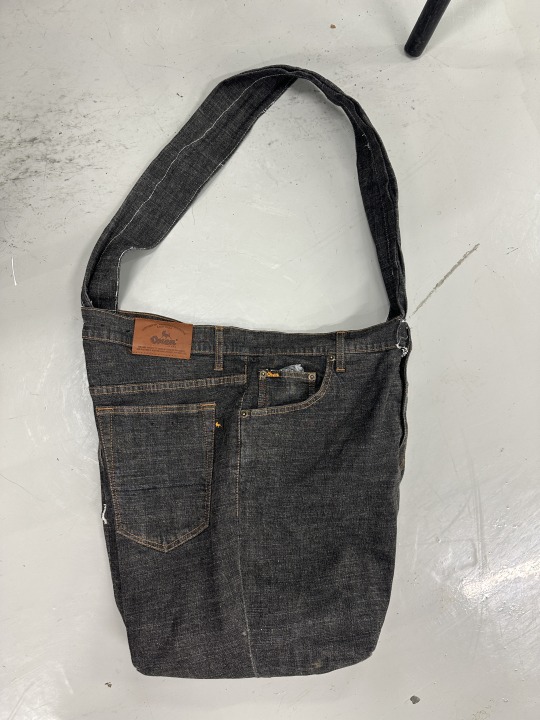
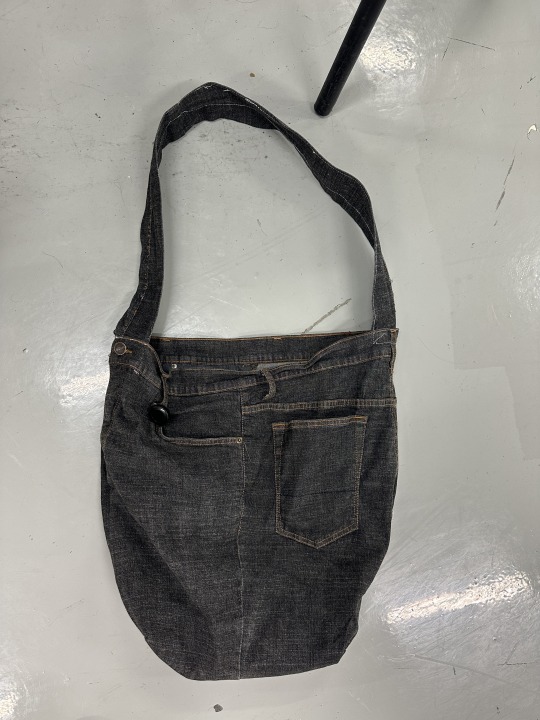
(~475 words)
REFERENCES:
“11 Artist Statement Examples (Plus Steps for Writing Yours).” Indeed, 15 August 2024, https://www.indeed.com/career-advice/career-development/artist-statement-examples.
Southwell, Colin. “Artistic Vision Statement.” Market Your Art, https://marketyourart.net/artistic-vision-statement/.
Papadimitriou, Alexander. “DALAM SOUTHEAST ASIA.” National Gallery Singapore, 7 July 2023, https://www.nationalgallery.sg/sites/default/files/The_Neglected_Dimension_Exhibition_Catalogue_July2023.pdf
Ramli, Nadia. “Creative Collectives: Abdul Ghani Abdul Hamid and His Contemporaries.” BiblioAsia, 31 January 2019, https://biblioasia.nlb.gov.sg/vol-14/issue-4/jan-mar-2019/creative-collectives/.
Bonneau, Anne. “How to Turn Old Jeans into an Awesome Denim Bag.” Zero-Waste Chef, 27 February 2024, https://zerowastechef.com/2024/02/27/turn-old-jeans-into-awesome-denim-bag/
0 notes
Text
WEEK 11
Design Manifesto
For this week's activity, we were grouped up and tasked to create a design manifesto. A design manifesto is a statement of principles that guides a designer’s work, focusing on creativity, ethics, and impact. It encourages purposeful, responsible design that goes beyond aesthetics to address real-world needs.
We added our own personal manifestos one by one as well as added some simple illustrations to go with it. For the text "MANIFESTO" at the bottom, we each took turns creating the letters to showcase our own personal styles.
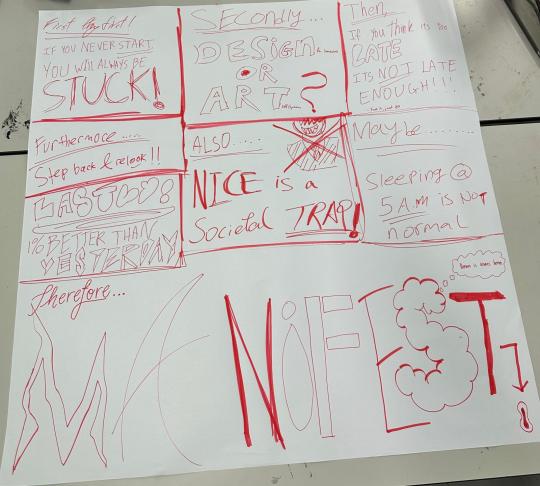
The manifesto that I personally live with is to always step back and relook. For me personally, I tend to concentrate on a specific idea way too much. I concentrate on the tiny little details more than the overall bigger picture. This in turn, leads to my work looking unorganized and out of place.
From my perspective, stepping back and relooking at a design is essential. It gives me the chance to see my work with fresh eyes, helping me spot issues or areas I might have missed during the initial creation process. It’s easy to get caught up in the details and lose sight of the bigger picture, so taking a step back helps me refocus on the overall goals and user experience. This break also sparks new ideas and allows me to refine my approach, ensuring that the design is not only visually appealing but also effective and aligned with the project’s objectives.
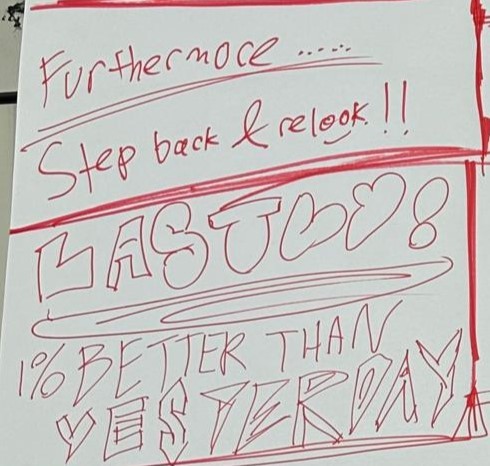
If i had to come up with alternative manifesto, it would be "Create with purpose". Purposeful design means every decision serves a clear goal, solving real problems and adding value. It’s not about trends or aesthetics alone, but about improving experiences and meeting specific needs. I ensure that every element aligns with the project’s goals, creating work that is meaningful, relevant, and connects authentically with the audience.
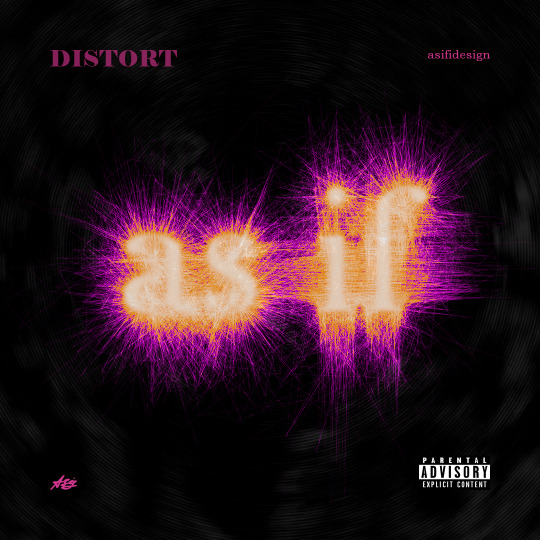
A change i would do for my group's manifesto is to be more intentional in terms of our use of space as well our overall message. We kind of freestyled everything in our manifesto. I feel that we had to be more intentional with what we wanted to do. We could have created more illustrations to pretty up our work as well.
The aspect of CTS B that was particularly significant to me was the trip to the museum. I really enjoyed the trip to the museum as it was really interesting to find out the rich history and culture behind every artwork. It really opened up my eyes and enabled me to see art in a different light.
(~428 words)
REFERENCES:
Hwang, Alvin. “Writing a Design Manifesto.” Design for Mindfulness, 17 April 2024, https://designformindfulness.blog/writing-design-manifesto/
Obrien, Tye. “Design Manifesto: A Mindset. What makes my thought process as a… | by Tye Obrien.” Medium, 1 May 2023, https://medium.com/@tyeobrien/my-design-manifesto-943bf73be74
Terranova, Céline. “Find Your Purpose as an Artist.” The Part-Time Artist, 18 April 2020, https://theparttimeartist.com/find-your-purpose-as-an-artist/
Gomez, Sergio. “The Power of Stepping Away from Your Art.” Art NXT Level, 21 September 2023, https://www.theartistnextlevel.com/blog/The-Power-of-Stepping-Away-from-Your-Art.
Mack, Danielle. “Creative Burnout: 5 Simple Ways to Reconnect With Your Process — A painted page.” A painted page, 31 January 2024, https://www.apaintedpage.com/artblog/creative-burnout-5-simple-ways-to-reconnect-with-your-process.
0 notes
Text
Week 4 & 5
This Is How You Critically Analyse Artistic Traditions and Lineages




Chua Mia Tee's "National Gallery Class" (1959) vividly depicts a bustling classroom scene at the National Gallery in Singapore, where students are deeply engaged in an art lesson. This painting highlights the importance of art education and the vibrant exchange of ideas within a creative environment. The dynamic composition allows each figure to contribute to the excitement, capturing the energy of the moment and inviting viewers into their world.
Central themes in the artwork include education and community, with the National Gallery symbolizing a hub for cultural exchange. Chua’s portrayal of camaraderie among the students reflects the collaborative spirit essential for artistic growth, reminding us that art flourishes in environments that encourage dialogue and shared experiences. This connection emphasizes the role of cultural institutions in fostering appreciation for local art.
Significant for its cultural and artistic impact during Singapore’s late 1950s, "National Gallery Class" underscores the importance of nurturing creativity in a rapidly evolving society. By illustrating this lively classroom, Chua inspires future artists and educators to value art education as a means of personal and societal development. Today, the painting remains a vital part of Singapore’s art history, celebrating the transformative power of art and education in shaping a rich cultural identity.



For the class activity on week 5, we were tasked to talk more about our findings as well as to dive deeper into analysing them. My team and I really tried extremely hard to garner as much information as we could about these beautiful artworks.





(~298 words)
REFERENCES:
“Teh Tarik Seller.” Roots.sg, https://www.roots.gov.sg/Collection-Landing/listing/1316971. Accessed 12 September 2024.
“Rhythm of Dance.” Roots.sg, https://www.roots.gov.sg/Collection-Landing/listing/1275498. Accessed 12 September 2024.
“Man and Environment.” Roots.sg, 29 March 2023, https://www.roots.gov.sg/Collection-Landing/listing/1034838. Accessed 12 September 2024.
Morriss, Gillian M. “The evolution of human artistic creativity - PMC.” NCBI, https://www.ncbi.nlm.nih.gov/pmc/articles/PMC2815939/. Accessed 12 September 2024.
Carey, Jessica. “How Do You Evaluate a Piece of Art? Art Critique as a Pro.” Creativity Chronicles, 18 January 2024, https://creativitychronicles.com/how-do-you-evaluate-a-piece-of-art/. Accessed 13 September 2024.
da Vinci, Leonardo. “Art history | Painting, Sculpture & Architecture.” Britannica, 18 August 2024, https://www.britannica.com/art/art-history. Accessed 13 September 2024.
2 notes
·
View notes
Text
Week 2
This Is How You Connect Theory and Practice
What is the theory behind my everyday activities? For todays lesson, we talked about identity. To me, Identity is the unique combination of attributes, experiences, and values that define an individual's sense of self and distinguish them from others. Our identity defines who we are as people. Without identity we would simply be lost.

Our personal identity defines who we are as designers as well. For me personally, I really love experimenting with multiple visual elements. I love "messy" works and that can be reflected in the works that i do.


These are some of the works I've done for studio. I really love loud and noisy design. I think my work really speaks volume about who I am as a designer.
From my perspective, identity is essential for designers, but it's not just about following a brand’s image or visual trends. It’s about gaining a deep understanding of the brand’s core values, stories, and purpose to create designs that are truly authentic. The challenge lies in avoiding oversimplification or misrepresentation for the sake of aesthetics. As designers, we must critically engage with the identity we are representing to ensure that the design truly reflects its essence, without diluting its meaning.
Consistency across design elements is critical, but it shouldn’t restrict flexibility. While a consistent visual language reinforces a brand’s identity, it’s also important to allow space for evolution. A brand must be able to adapt and grow with changing market dynamics and cultural shifts. If we focus too much on rigid consistency, we risk creating designs that feel outdated or stagnant. The key is finding a balance between maintaining coherence and allowing innovation, ensuring the design remains relevant and resonates with audiences over time.
(~285 words)
REFERENCES:
Blakeley, Sasha. “Personal Identity | Definition, Philosophy & Theories - Lesson.” Study.com, https://study.com/academy/lesson/what-is-personal-identity-definition-philosophy-development.html. Accessed 10 September 2024.
van Schneider, Tobias, and Pranjal Kaila. “Establishing your identity as a designer.” Tobias van Schneider, 15 October 2020, https://vanschneider.com/blog/young-designers/establishing-your-voice-as-a-designer/. Accessed 10 September 2024.
Balkhi, Syed, and Julian Oppelt. “What Is a Visual Identity and Why Does It Play a Crucial Role in Branding?” The Branding Journal, 19 September 2023, https://www.thebrandingjournal.com/2023/05/visual-identity/. Accessed 10 September 2024.
Ying, Si. “Identity in Art & Design. It's never been clear to me. Half my… | by Si Ying | Bootcamp.” Bootcamp, 15 March 2023, https://bootcamp.uxdesign.cc/identity-in-art-design-a09f7413fa2e. Accessed 10 September 2024.
0 notes
Text
Week 1
Praxis: Creative Practice and Critical Thinking
What is Critical Thinking? This is a question that pops up in our heads all the time.
Critical thinking is the process of analyzing and evaluating information to make reasoned and well-supported decisions. It involves:
Analysis: Breaking down complex information and identifying underlying assumptions.
Evaluation: Assessing the credibility of sources, weighing evidence, and detecting biases.
Synthesis: Integrating information to form a coherent understanding or new insights.
Reasoning: Applying logical principles to connect ideas and solve problems.
Reflection: Reviewing and improving one’s own thinking processes and decisions.
Overall, critical thinking helps in making informed, objective, and effective decisions.

Critical thinking and creative practice are interconnected:
Problem Solving: Critical thinking assesses solutions; creative practice generates new ideas.
Idea Evaluation: Critical thinking refines creative concepts; creative practice generates them.
Innovation: Creative practice drives novelty; critical thinking ensures practicality.
Balancing: Creative practice explores new approaches; critical thinking evaluates their feasibility.
Reflection: Critical thinking enhances reflection on creative work; creative practice involves continuous reflection.
Decision-Making: Critical thinking supports decision-making by evaluating options; creative practice provides the ideas.
Together, they enhance problem-solving and innovation by combining novel ideas with rigorous evaluation.

The lecture really helped me understand the significance of critical thinking. I really underestimated the importance of critical thinking as a designer.
To integrate critical thinking into my design process, I start by clearly defining the problem and questioning my assumptions to fully understand user needs and project constraints. I evaluate context, synthesize research and feedback, and use logical reasoning to explore solutions. Through prototyping and testing, I refine the design based on feedback. Finally, I assess the solution’s usability, aesthetics, and functionality to ensure it meets both user goals and project objectives, ensuring my designs are creative, informed, and practical.
(~277 words)
REFERENCES:
Choudhari, Vanitha. “Creative or Critical Thinking: What works in an organisation?” LinkedIn, 24 January 2022, https://www.linkedin.com/pulse/creative-critical-thinking-what-works-organisation-vanitha-choudhari-. Accessed 10 September 2024.
Pfeiler, Sarah. “Help me Understand: 4 Ways to Use Critical Thinking to Develop Empathy.” thinkLaw, 21 September 2017, https://thinklaw.us/help-me-understand-4-ways-to-use-critical-thinking-to-develop-empathy/. Accessed 10 September 2024.
“[Solved] Intellectual Empathy: Having a consciousness of the need to...” CliffsNotes, 18 June 2023, https://www.cliffsnotes.com/tutors-problems/Entrepreneurship/51880846-Intellectual-Empathy-Having-a-consciousness-of-the-need-to/. Accessed 10 September 2024.
Goldstein, Stéphane. “What Intellectual Empathy Can Offer Information Literacy Education.” Rowan Digital Works, 18 December 2019, https://rdw.rowan.edu/cgi/viewcontent.cgi?article=1015&context=lib_scholarship. Accessed 10 September 2024.
0 notes